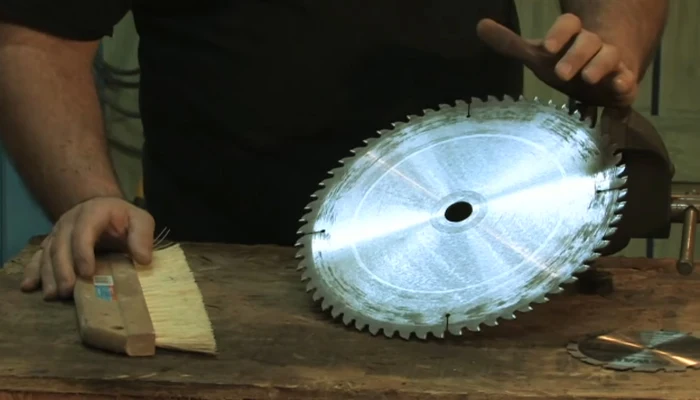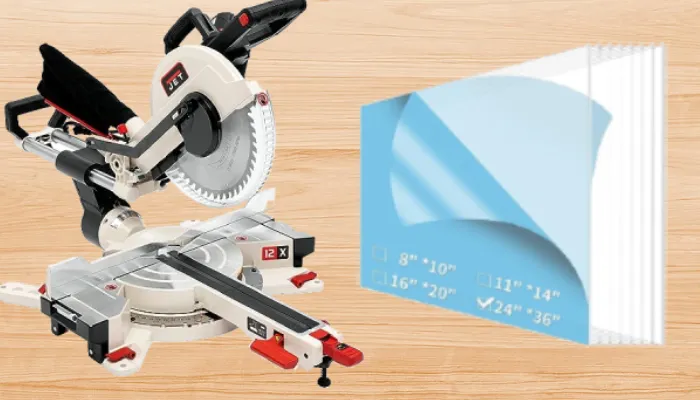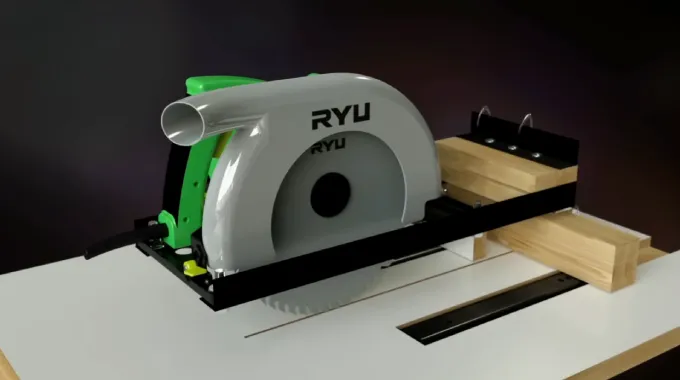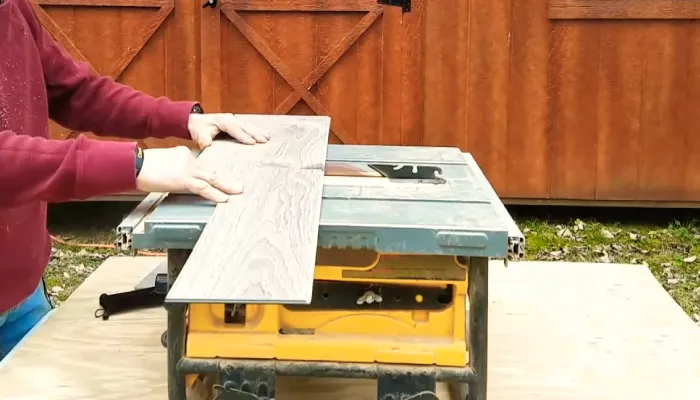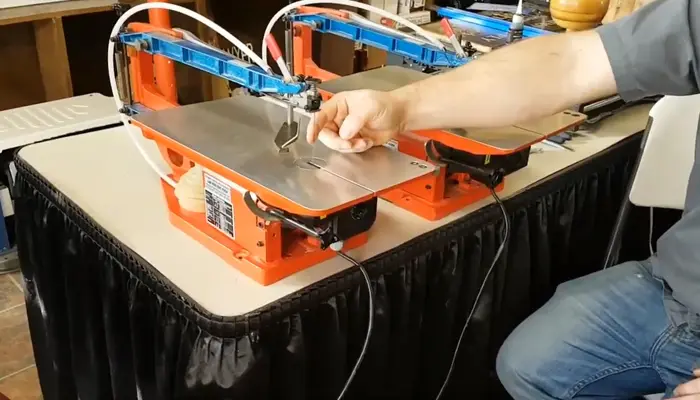How to Remove Rust From Circular Saw Blades: 3 Methods
Circular saw blades can rust over time, compromising their performance. I believe that removing rust from circular saw blades is a crucial part of tool maintenance. Maintaining the sharpness and functionality of saw blades is paramount in woodworking and metalworking.
According to my research, soaking the blades in vinegar helps dissolve the rust. Applying baking soda and water paste to the blades and scrubbing them off works well. Polishing the blades with WD-40 and sandpaper can also help remove rust and restore their effectiveness.
Here, I’ll guide you through the best methods to banish that pesky rust and get your blades back in prime cutting condition. So, let’s get started.
How to Remove Rust From Circular Saw Blades: The Best 3 Methods
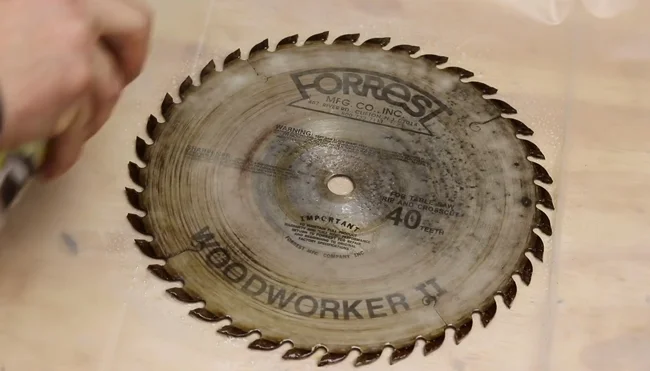
In terms of removing rust from wood cutting circular saw blades, there are three effective methods that I recommend.
- Method 1: Soaking with vinegar
- Step 01: Vinegar soak
- Step 02: Soaking time
- Step 03: Scrubbing
- Step 04: Rinse and dry
- Method 2: Baking soda paste
- Step 01: Initial cleaning
- Step 02: Prepare the paste
- Step 03: Application
- Step 04: Scrubbing
- Step 05: Rinse and dry
- Method 3: Polishing with Wd-40 and sandpaper
- Step 01: Initial cleaning
- Step 02: Wd-40 application
- Step 03: Sandpaper use
- Step 04: Finishing touch
Method 1: Soaking with Vinegar
I’ve found that soaking the rusty wood cutting circular saw blades in vinegar is an effective method for removing the rust.
Step 01: Vinegar Soak
To remove rust from old circular saw blades, you need to place the rusty blade in a container filled with white vinegar. Ensure that the blade is fully submerged in the vinegar.
Vinegar is an effective rust remover due to its acetic acid content, which helps break down the rust. The acidic nature of vinegar helps to dissolve the rust and makes it easier to remove.
Step 02: Soaking Time
Let the circular saw blade soak in vinegar for the recommended time to remove rust effectively. The blade should be left to soak in the vinegar for a sufficient amount of time to allow the rust to loosen and dissolve. The vinegar works as a natural rust remover due to its acidic properties.
Submerging any type of circular saw blades in vinegar for at least 5-6 hours or overnight for stubborn rust, the acid breaks down rust and eases its removal. This soaking time allows the vinegar to penetrate the rust and loosen its grip on the blade, ensuring a thorough rust removal process.
Step 03: Scrubbing
After soaking the wood cutting circular saw blade in vinegar, you must begin by using a mildly abrasive scouring pad to scrub away the loosened rust.
I strongly suggest making sure to apply gentle pressure and use circular motions to remove the rust from the surface of the blade effectively. It’s important to be thorough and cover all areas of the blade to ensure that all rust is removed.
Step 04: Rinse and Dry
Rinsing the blade under warm water ensures that any remaining vinegar residue is completely removed. Once rinsed, carefully dry the blade using a microfiber cloth to prevent any moisture from causing further rusting.
Method 2: Baking Soda Paste
When rust forms on wood cutting circular saw blades, baking soda paste can be an effective cleaning method. The process involves several steps:
Step 01: Initial Cleaning
To begin the initial cleaning process for removing rust from a band saw table or circular saw blades, I recommend using a soft-bristled brush to scrub away dirt and debris. This will help loosen any rust that is present on the blade’s surface.
Step 02: Prepare the Paste
To make the paste, mix baking soda with water until it forms a thick consistency that can easily adhere to the rust spots on the blades. The paste should have a texture similar to toothpaste, ensuring it stays in place while you work on removing the rust.
Step 03: Application
Once you have prepared the baking soda paste, spread it evenly over the rusted areas of the blade. Make sure to cover all the rusted spots with a thin layer of the paste.
I think using a brush or your fingers to gently rub the paste into the rusted areas, ensuring that it gets into all the nooks and crannies. This will help the baking soda to effectively remove the rust from the saw blade.
Step 04: Scrubbing
Now, vigorously scrub the rust spots on the circular saw blades using a toothbrush or scouring pad. By applying pressure and using back and forth motions, you need to ensure that the abrasive action of the baking soda paste effectively removes the rust. You must also cover all the rust spots and work on each blade individually.
Step 05: Rinse and Dry
Thoroughly Rinse the Blades: After scrubbing the blades with the baking soda paste, rinse them under warm water. This will help remove any remaining rust and residue. Make sure to clean both sides of the blades to ensure all the rust is removed.
Dry the Blades: Once the blades have been rinsed, it’s crucial to dry them properly. I recommend using a clean microfiber cloth to dry the blades carefully. This step is essential to prevent further rusting from occurring.
Method 3: Polishing with WD-40 and Sandpaper
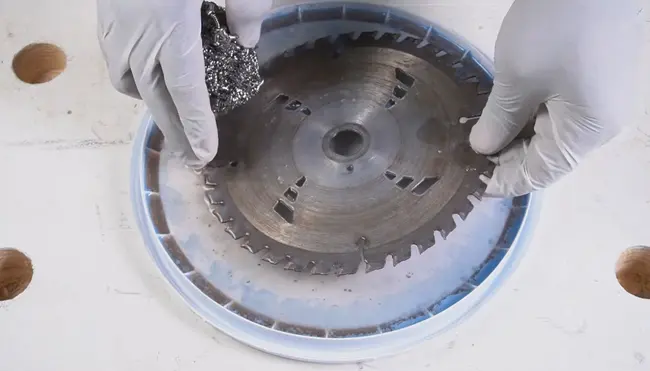
WD-40 and sandpaper are also effective methods of removing rust from blades.
Step 01: Initial Cleaning
As I know, the initial cleaning step is always crucial and must not be skipped. This involves scrubbing the blades with a soft cloth or sponge to remove loose dirt and debris.
Step 02: WD-40 Application
For the next step in removing rust from circular saw blades, you need to generously apply WD-40 to the rusty areas and let it sit for a few minutes.
WD-40 is a versatile lubricant that also helps to loosen rust. By spraying it directly onto the rusty spots, the WD-40 penetrates the rust and breaks it down.
Allowing it to sit for a few minutes gives the WD-40 time to work its magic and make the rust easier to remove.
Step 03: Sandpaper Use
Using 400-grit sandpaper, slowly and gently polish the wood-cutting circular saw blades to remove rust, following the method of WD-40 application.
- With a circular motion, scrub off the rust, careful not to apply too much pressure.
- The sandpaper’s abrasive surface effectively removes the rust particles, restoring the blades to their original condition.
- If necessary, you can repeat the process until all traces of rust are gone.
Step 04: Finishing Touch
- Apply a small amount of WD-40 to the blade’s surface, ensuring it covers the entire area.
- Using fine-grit sandpaper, again lightly sand the blade in a circular motion, careful not to apply too much pressure. After that, it is best to sharpen your saw blade with a circular saw blade sharpener.
This process helps to smooth out any rough spots and gives the blades a clean, polished appearance.
How often should I inspect my saw blades for rust?
You should regularly inspect your saw blades for rust every few weeks or at the change of seasons. This regular inspection helps you to catch any signs of rust early on and prevent it from spreading further.
Additionally, inspecting the saw blades allows you to identify any other issues, such as dullness or damage, which can also impact their performance. If damage occurs, I suggest you change the saw blade.
Can I remove rust on saw blades with an electric sander instead of sandpaper?
With an electric sander, rust on saw blades can be effectively removed. However, it’s important to consider the potential drawbacks of using an electric sander instead of sandpaper.
While an electric sander can certainly speed up the rust removal process, it may be less precise compared to hand-sanding with sandpaper. The rotating motion of the electric sander can generate excessive heat, potentially damaging the saw blade if not used carefully.
Additionally, the larger size and power of an electric sander may make it more difficult to maneuver around the intricate areas of the heavy circular saw blade.
Can I use a wire brush for rust removal on circular saw blades?
Using a wire brush is a common method for removing rust from circular saw blades. It provides an effective way to scrub away the rust without causing damage to the blade’s surface.
Wire brushes have bristles that are tough enough to remove rust from metal surfaces but not so abrasive that they scratch the blade.
Revive Your Circular Saw Blades From Rust
Keeping your wood-cutting circular saw blades rust-free is essential for optimal performance. To catch rust early on, it is recommended that you regularly inspect your blades.
With the methods detailed in my guide, you can take proactive steps to remove rust from saw blades, including circular saw blades. Whether you choose vinegar, baking soda, or WD-40, these techniques allow you to rejuvenate your blades and keep them in top-notch condition.
While sandpaper or wire brush can be effective for rust removal, using an electric sander isn’t recommended as it may damage the blade.
Proper care of saw blades can ensure smooth cutting and prolong the lifespan of equipment.

